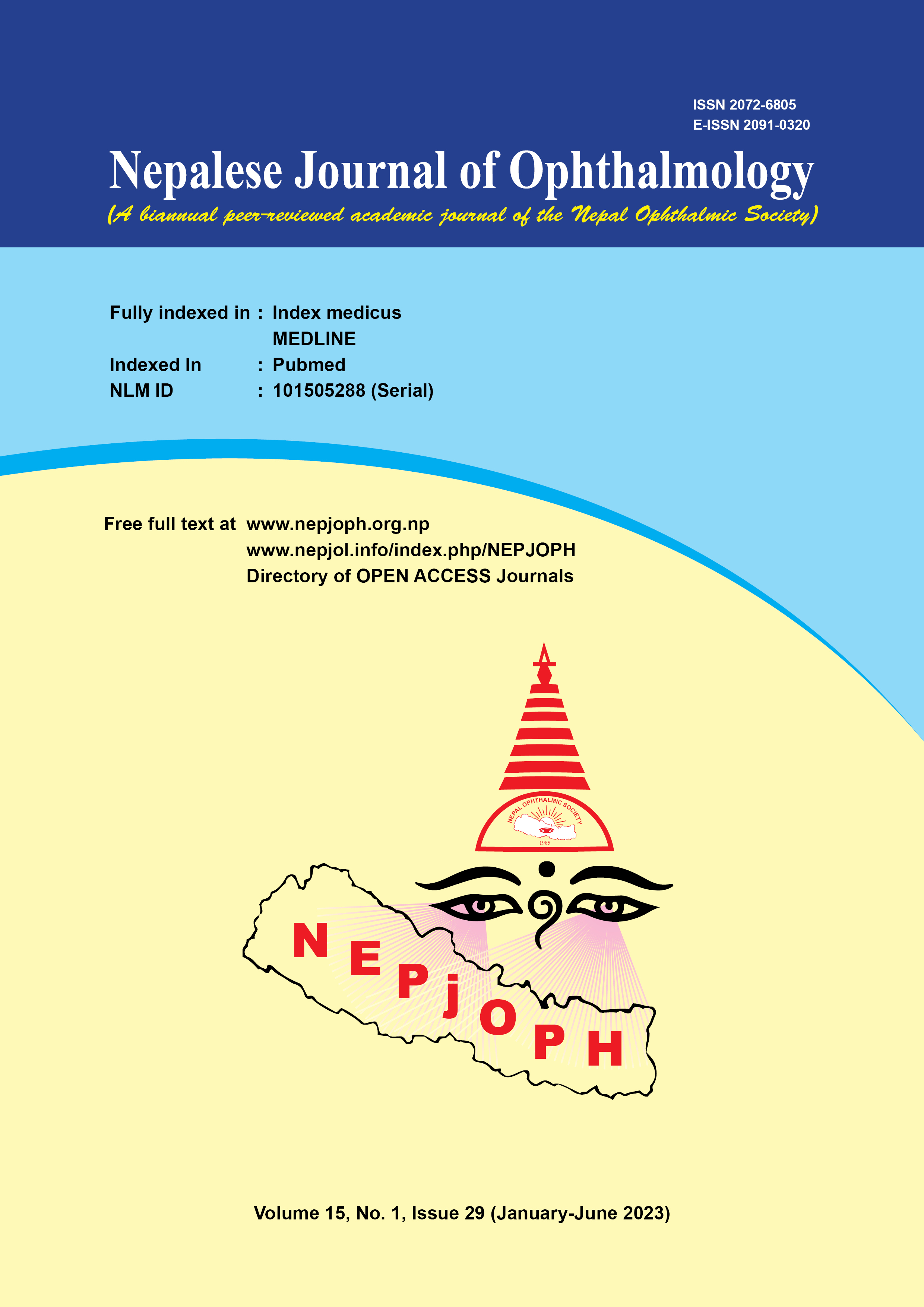The Retinal Nerve Fiber Layer and Macular Thickness in Patients with Type 2 Diabetes Mellitus without Retinopathy Using Optical Coherence Tomography: A Comparative Study
DOI:
https://doi.org/10.3126/nepjoph.v15i1.47629Keywords:
Optical coherence tomography, Retinal nerve fiber layer, DiabetesAbstract
Introduction: Diabetes leads to an alteration in retinal nerve fiber layer (RNFL) thickness and macular thickness which can easily be detected with optical coherence tomography (OCT).
Objectives: This study was done to compare the RNFL and macular thickness between diabetic patients without retinopathy and non-diabetic patients so that it would be useful in the early detection of retinal changes if present. The correlation between the RNFL and macular thickness with metabolic blood parameters of diabetic subjects was also studied.
Materials and methods: This is an observational, cross-sectional, hospital-based study including 120 subjects who were further divided into two groups. Group A consisted of 60 diabetic patients without retinopathy and group B consisted of 60 non-diabetic patients. The blood parameters were recorded and the RNFL thickness and macular thickness were compared between the two groups after evaluation by OCT.
Results: The average central macular thickness was found to be more in group A but was statistically insignificant (p=0.29). Macular thickness in the superior quadrant was significantly higher among group A when compared with group B (p=0.01). Whereas RNFL thickness difference between the two groups was statistically insignificant (p=0.53). Blood urea showed significant positive correlation (r=0.269) with central macular thickness (p=0.03).
Conclusion: Our study showed that diabetic patients without retinopathy could have increased macular thickness in the superior quadrant when compared with normal people whereas RNFL thickness may not alter. The blood urea levels of the diabetic patients can provide us clues regarding possible retinal changes.
Downloads
Downloads
Published
How to Cite
Issue
Section
License
Copyright (c) 2023 Nepalese Journal of Ophthalmology

This work is licensed under a Creative Commons Attribution-NonCommercial-NoDerivatives 4.0 International License.
This license enables reusers to copy and distribute the material in any medium or format in unadapted form only, for noncommercial purposes only, and only so long as attribution is given to the creator.




